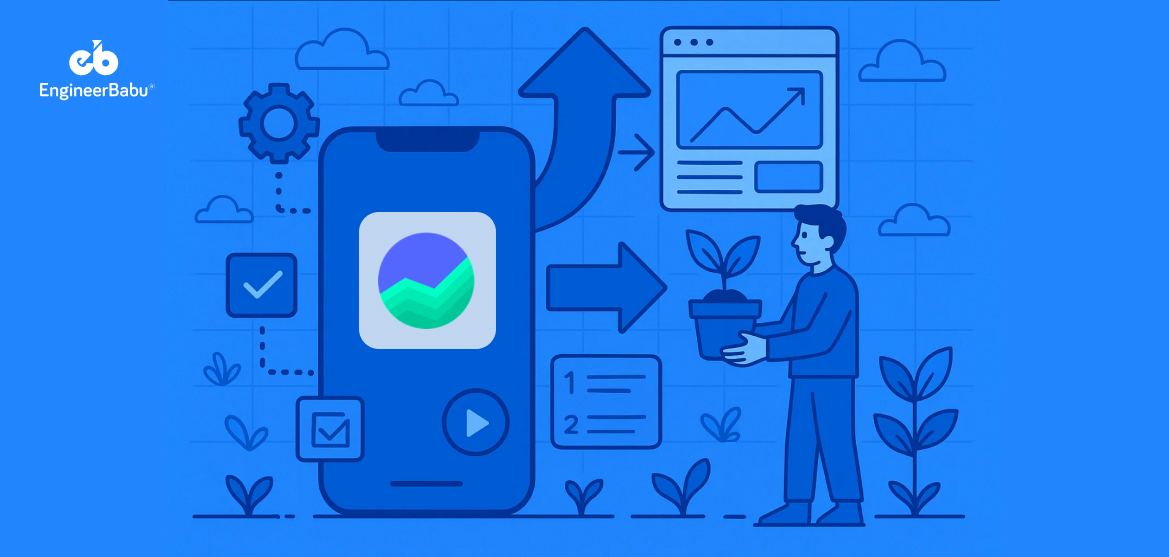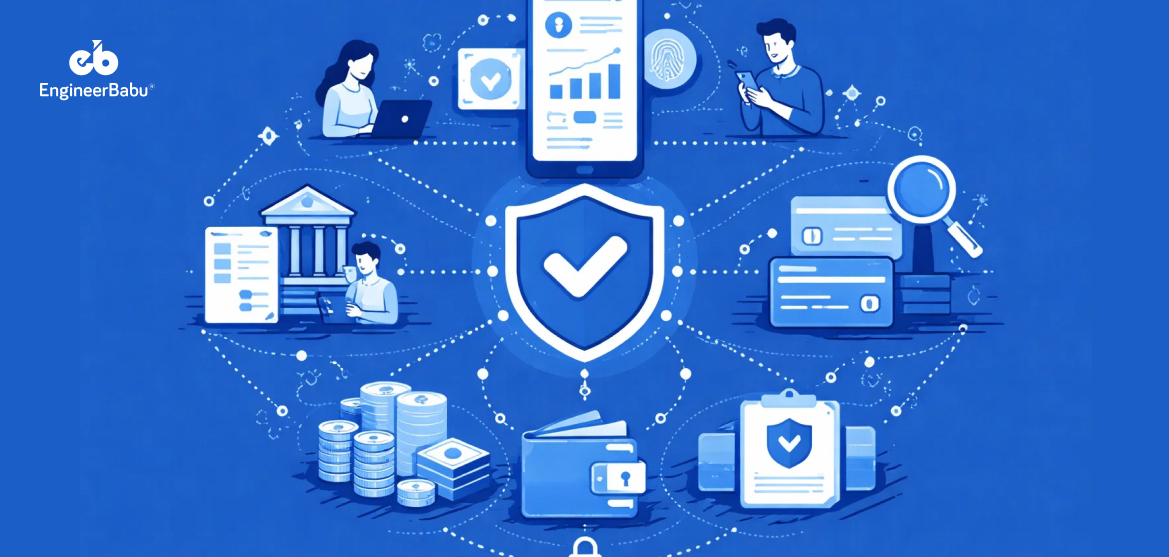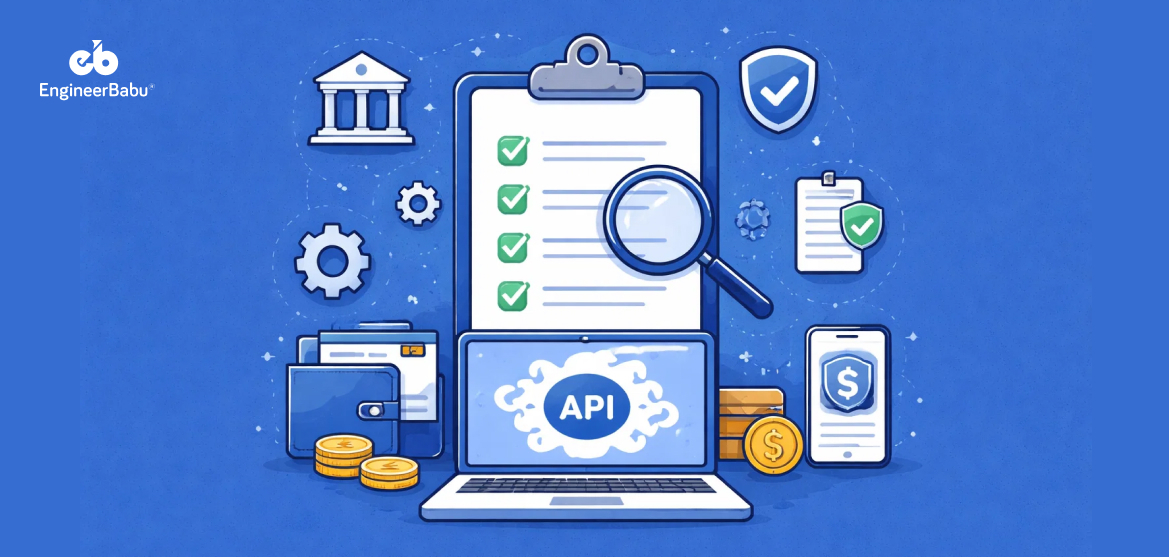When you think about investing today, chances are an app like Groww comes to mind before walking into a bank or calling a broker. That’s because the way people manage money has changed dramatically. And platforms like Groww are leading that shift by making investments as easy as ordering food online.
In fact, Groww crossed 13.16 million active users in 2024, showing just how quickly digital investing has become mainstream in India. The best part?
This isn’t just about convenience, it’s about trust, accessibility, and giving everyday users the confidence to handle stocks and mutual funds.
For fintech founders and product builders, this opens up a massive opportunity. The question is no longer “Will people use investment apps?”, that’s already proven. The real question is: how to create an app like Groww that stands out in this highly competitive market?
Therefore, this guide breaks down the process step by step, from understanding Groww’s business model and the steps to the technology stack, and the costs involved. If you’re serious about building the next big investment platform, you’re in the right place.
Understanding Groww’s Business Model
To figure out how to create an app like Groww, you first need to understand why it works so well. At its core, Groww simplifies investing for a massive audience that was previously intimidated by the complexity of financial products.
Instead of confusing charts and jargon, the platform focuses on clean design, guided onboarding, and easy access to multiple asset classes.
Revenue Model: Groww generates income primarily through brokerage fees on stock trading, subscription-based advisory services, and small margins on premium offerings. While mutual fund investments remain commission-free, the monetisation comes from users who actively trade or seek advanced investment features.
Customer Base: The app caters to first-time investors as much as seasoned traders. A large chunk of its growth has come from Tier-2 and Tier-3 cities. Thus, proving that the demand for simplified investing is not limited to metros.
Market Positioning: What sets Groww apart is its positioning as an all-in-one financial platform. From mutual funds and SIPs to stocks and ETFs, users don’t have to juggle multiple apps. This convenience, paired with an emphasis on trust and security, has been key to retaining users in an industry where switching costs are low.
For anyone looking to replicate this success, the lesson is clear: build an experience that lowers the entry barrier while keeping advanced investors engaged.
Technology Stack for Building an Investment App
Before jumping into development, it’s important to map out the right technology stack. The tools you choose will shape your app’s speed, security, scalability, and overall user experience. Let’s break down the key layers you’ll need to consider.
- Frontend Technologies
The frontend is what users interact with every day. Frameworks like React Native and Flutter are popular because they allow cross-platform mobile app development without compromising performance. This saves both time and cost while ensuring smooth navigation and responsive design across devices. A great frontend directly impacts user trust in a fintech app.
- Backend Development
The backend powers the entire investment experience. Node.js and Python development stand out for their ability to handle real-time data with low latency, while Java is known for rock-solid reliability. The choice here depends on whether you want faster deployment cycles or a highly structured environment. Either way, scalability should remain the priority.
- Databases
For financial applications, the database must balance speed with security. PostgreSQL works well for structured financial data, while MongoDB is ideal when handling large volumes of unstructured data such as logs or user interactions. Many companies use a hybrid approach, combining relational and non-relational databases to achieve both flexibility and consistency.
- APIs and Integrations
Without APIs, your investment app is just an empty shell. You’ll need integrations for stock market data, payment gateways, and KYC/AML verification services. Choosing reliable providers ensures uninterrupted transactions and accurate market feeds. Moreover, the best fintech APIs also allow your platform to stay updated as regulations and user needs evolve. Thus, making them a non-negotiable part of development.
- Security Protocols
Security isn’t optional, it’s the foundation. Encryption, multi-factor authentication, and secure data storage are baseline requirements. Beyond these, regular penetration testing and compliance with PCI-DSS standards help protect sensitive financial data. So, establishing a “security-first” culture early reduces risks as the app scales and builds long-term credibility with users.
These are the tech stacks that will help to answer your question – how to create an app like Groww?
Step-by-Step Process: How to Create an App like Groww
Building an investment app is a structured journey that blends market research, compliance, user experience, and technology. Here’s a breakdown of the process from idea to launch.
Market Research and Competitor Analysis
Every successful app begins with deep research. Understanding investor behavior, fintech adoption trends, and gaps in competitor offerings will help you carve out your niche.
For example, when you search – how to create an app like Groww, one of the first lessons is identifying user pain points. Groww saw that existing apps were too complex for beginners. This type of insight ensures your product delivers genuine value from day one.
Define Your Value Proposition
A crowded fintech market means your app must stand out. Identify the unique problem your platform will solve, whether it’s simplifying stock trading for beginners or offering a digital wallet like Groww.
A clear value proposition also guides design and feature priorities, ensuring that you don’t just copy competitors but provide a distinct reason for users to choose your platform over others.
Choose the Right Tech Stack and Team
Your technology stack determines performance, scalability, and compliance readiness. Partnering with dedicated remote developers, either in-house or outsourced, can speed up development while avoiding costly mistakes.
For example, fintech apps require engineers with proven experience in security-first architectures. Choosing the right mix of tools and people assures that your app not only launches but can also handle millions of secure daily transactions.
Build a Minimum Viable Product (MVP)
MVP development allows you to test core features without over-investing. Start with essentials like onboarding, KYC, payment integration, and portfolio tracking. Launching a fintech MVP provides real feedback from early adopters, which helps refine the experience before a full rollout.
This lean approach reduces risk, saves costs, and accelerates the learning curve, which is crucial for fintech startups working in regulated environments.
Integrate APIs and Payment Systems
No investment app can function without seamless APIs. Stock market data providers, payment gateways, and KYC/AML solutions must be carefully chosen for accuracy and compliance.
Unreliable integrations can lead to failed trades or regulatory penalties, both of which are brand-damaging. Therefore, establishing strong vendor partnerships early for API development and integration services ensures that users trust every transaction, from deposit to tracking.
Test for Security and Compliance
Financial apps are prime targets for cyber threats, so rigorous testing is essential. This goes beyond standard QA – penetration testing, data encryption audits, and compliance checks with SEBI or RBI guidelines must be built into the process.
Also, regular audits not only keep regulators satisfied but also signal credibility to users. Security-first development protects your brand from breaches that could derail growth permanently.
Launch and Gather Feedback
The launch was never the finish line, it’s the beginning of iteration. Early user feedback will highlight friction points that weren’t visible during testing. Whether it’s simplifying navigation, adding investment options, or improving customer support, listening to users builds loyalty. Continuous improvement confirms that your app evolves with the market instead of becoming outdated quickly, which is critical in a competitive space like fintech.
Scale with Advanced Features
Once the foundation is stable, scaling becomes the focus. Advanced features like goal-based investing, robo-advisory, or integration with global exchanges can attract seasoned investors.
Scaling also means upgrading infrastructure to handle millions of users without downtime. The smartest fintech companies grow by layering advanced services on top of a reliable core, expanding their audience without losing the simplicity that attracted users initially.
Cost of Developing an App like Groww
The cost of building an investment app depends heavily on scope. A simple MVP with onboarding, KYC, payments, and basic trading features may cost between $1000–$1500 if outsourced to a skilled team in India.
A full-scale platform with advanced analytics, robo-advisory, and seamless integrations could easily cross $8000–$30,000 or more. Factors like security compliance, cloud infrastructure, and third-party APIs significantly affect the budget.
Beyond development, ongoing costs for maintenance, regulatory audits, and feature updates must also be considered.
Conclusion
Creating an investment platform that mirrors Groww’s success requires a clear business model, robust technology, and a relentless focus on compliance and security. If you’re wondering how to create an app like Groww, the answer lies in combining simplicity with scalability.
This ensures that both beginners and seasoned investors feel confident using your product. With the right strategy and execution, your app could capture a significant slice of the growing fintech market.
So, looking to bring your fintech idea to life? Hire fintech developers or outsource your needs to EngineerBabu and build a secure, scalable, and user-friendly investment app tailored to your vision.
FAQs
What features are essential when building an app like Groww?
Core features include smooth onboarding with KYC verification, secure payments, real-time market data, and easy portfolio tracking. These basics ensure user trust and usability. To stand out, you can add advanced options like robo-advisory, SIPs, and personalized notifications.
How long does it take to develop an investment app?
The timeline depends on scope. A basic MVP might take 4–6 months, while a fully featured investment platform could require 9–12 months or more. Choosing the right team and tech stack speeds up delivery without compromising quality.
How to create an app like Groww without overspending?
Start lean with an MVP that covers essential features such as KYC, payments, and basic trading. This approach reduces risk and allows real-world testing before scaling. Once validated, you can gradually expand into advanced features.
What challenges do startups face while building investment apps?
The biggest hurdles include navigating complex financial regulations, ensuring airtight data security, and winning user trust in a competitive space. Technical challenges like scaling infrastructure also come into play. Overcoming these requires careful planning and experienced fintech developers.
Is compliance really a major cost factor in investment app development?
Yes, compliance with SEBI, RBI, and data security laws can significantly influence cost and timelines. Skipping this step can lead to penalties or even shutdowns. Allocating budget for legal consultation and compliance audits is non-negotiable in fintech.




